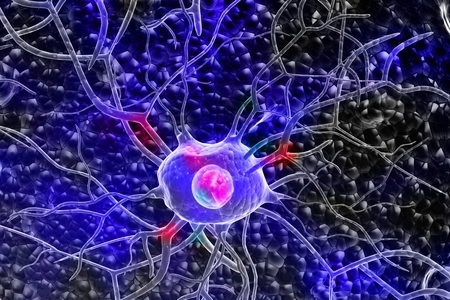Answers to Common Questions About MS
0 Comments
How is Multiple Sclerosis Treated?
No cure exists for multiple sclerosis, though several treatment options exist. Multiple sclerosis patients may take disease-modifying medications, which lower how often they have relapses of the disease and how severe these relapses are. The U.S. Food and Drug Administration has approved eight disease-modifying medications for multiple sclerosis, which include Tysabri (natalizumab), Rebif and Avonex (interferon beta-1a), Betaseron and Extavia (interferon beta-1b), Novantrone (mitoxantrone), Copaxone (glatiramer acetate) and Gilenya (fingolimod). These disease-modifying medications have different methods of delivery. Anonex is an injection done into the muscle, while Extavia, Copaxone, Betaseron and Rebif are injections done under the skin. Patients taking Novantrone and Tysabri receive an IV: Novantrone is administered four times a year, while Tysabri is administered every four weeks, according to the National MS Society's booklet on disease-modifying medication. The last FDA approved disease-modifying medication for multiple sclerosis, Gilenya, is taken orally. Read Full Article

What Types of Symptoms Can MS Patients Have?
The symptoms of MS depend on the type of nerve fibers affected by the demyelination. For example, if a MS patient has demyelination of the nerve fibers that carry motor signals, then that patient can have issues with movement. Symptoms may include weakness in the limbs, muscle spasms, coordination problems and a loss of balance. Some MS patients may have problems walking or moving their arms and limbs. Other symptoms include tremors and stiffness. The NINDS explained that the first symptoms that MS patients commonly experience are vision problems: about 55 percent of MS patients have optic neuritis, which is inflammation of the optic nerve, and around 15 percent of MS patients experience this issue as their first symptom. With optic neuritis, patients have symptoms usually in one eye, though both eyes may be affected. Symptoms include a loss of color vision, pain, vision loss and seeing flashing lights. MS patients may have uncoordinated eye movements or problems seeing straight ahead. Read Full Article

Can Pain Occur with Multiple Sclerosis?
The National Multiple Sclerosis Society cited research that found 55 percent of patients with this disorder have had “clinically significant pain” and 48 percent of patients have had chronic pain. Pain may be a key symptom of the disorder, as it “can be a major cause of reduced function [and] decreased sense of well-being,” according to the Cleveland Clinic. Patients with multiple sclerosis may have trigeminal neuralgia, a disorder of the fifth cranial nerve. The Cleveland Clinic noted that trigeminal neuralgia is more common among patients with multiple sclerosis compared to the general population. Patients suffering from trigeminal neuralgia have sharp pain on one side of their face, which can be severe. Lhermitte’s sign can also cause stabbing pain, which runs down the patient’s spine from the back of her head. Multiple sclerosis may cause dysesthesia, which are burning or aching feelings around the patient’s body. This type of pain with multiple sclerosis may be acute or chronic. Patients may have burning pain in their legs, which may get worse at night. Aching pain may occur in their back or neck. Spasticity can also cause pain for multiple sclerosis patients. These include muscle spasms and tightness in the joints. Read Full Article
Add a CommentComments
There are no comments yet. Be the first one and get the conversation started!